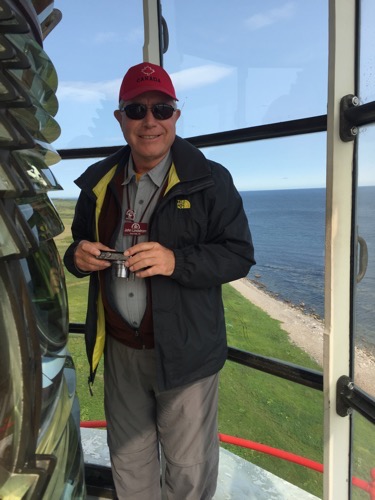The Caravan tour is winding down as this is the last day. The city tour took us to many of the same places we walked around yesterday but we got a little more information about what we were looking at. Homes in the Heritage District must maintain the look of the late 1800’s. The guide pointed out the former homes of Walter Pidgeon, Louis B. Mayer (of Metro Golden Mayer) and Donald Sutherland. We shopped at the Old City Market and then visited some of the small city parks and other neighborhoods, including the guide’s home.
The Carleton Martello Tower is a National Historic Site. The tower was built by the British during the War of 1812 but not completed until 1815 when the war ended. It was used to protect the harbor and town during WWI and WWII but mostly it was neglected until made into a Historic site. It is being renovated so we could not go inside.
No visit to Saint John is complete until you stop to see the Saint John river change direction and flow backwards. The tides in the Bay of Fundy are so high and strong that when the bay waters meet the river it actually forces the river water back up stream until the tides turns. If one has patience you can see the river flowing down stream then it stalls as the tide rises and then it flows backwards.
This evening was our farewell dinner and party. The dinner was nice but the party afterwards was better. We gathered outside around the TV at Mellow and Janet’s RV and watched a slide show that Mellow had put together about all the things we had seen on this trip. Then Pat and I led the group in a song that Pat wrote to the tune of “God Bless America”. She is quite the poet. Cathy and Bill put together a little piece of prose about each person on the trip and some were quite funny. Like Barry having too many Hot Rum toddy’s and dancing, me and a name change, Janet being too cold and Conrad’s tire thumping to name just a few.
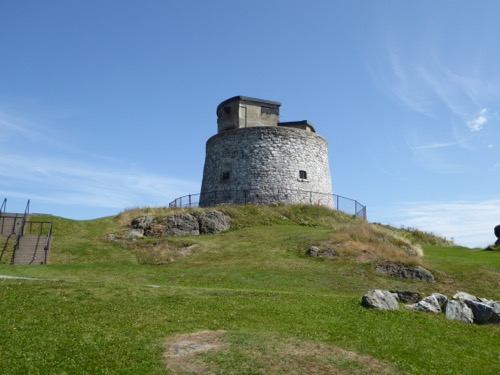
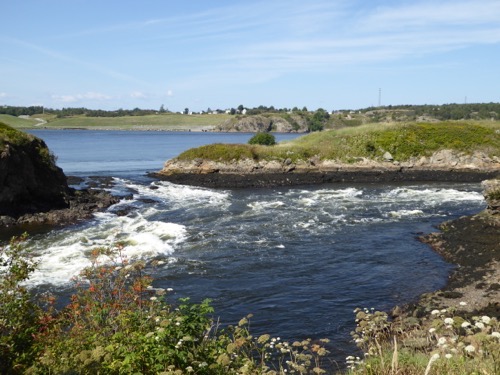



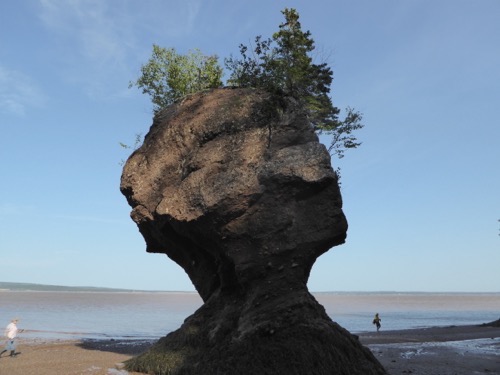
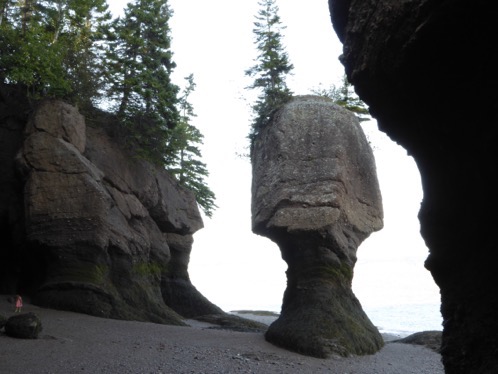



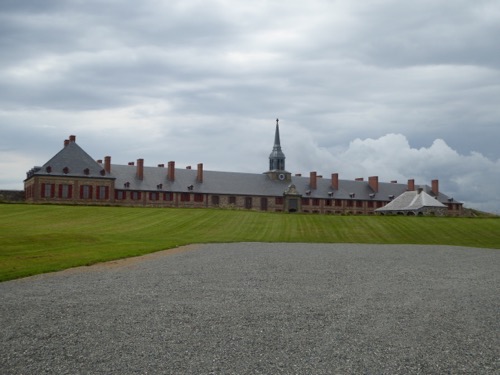
 This afternoon we toured the Fortress of Louisbourg National Historic Site. The French came here in 1713 after ceding Newfoundland to the British. This site was situated such that it would be useful in protecting PEI and Cape Breton from invaders as this was a rich area for cod fishing on the Grand Banks. Louisburg became a hub of commerce and trading with France, Quebec, and New England. They had just finished building the last houses in 1745 when England again attacked and won the city. It was given back to the French in 1748 but the British won it back again in 1758 when they destroyed the fortress walls so it could never again be a fortified French base.
This afternoon we toured the Fortress of Louisbourg National Historic Site. The French came here in 1713 after ceding Newfoundland to the British. This site was situated such that it would be useful in protecting PEI and Cape Breton from invaders as this was a rich area for cod fishing on the Grand Banks. Louisburg became a hub of commerce and trading with France, Quebec, and New England. They had just finished building the last houses in 1745 when England again attacked and won the city. It was given back to the French in 1748 but the British won it back again in 1758 when they destroyed the fortress walls so it could never again be a fortified French base.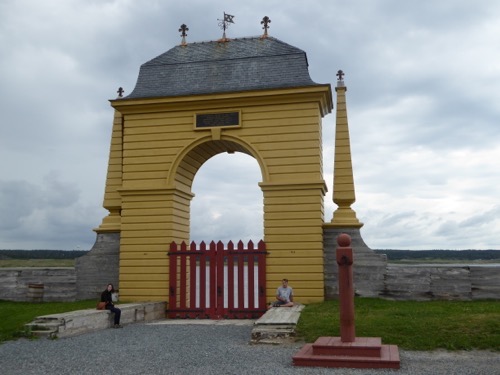

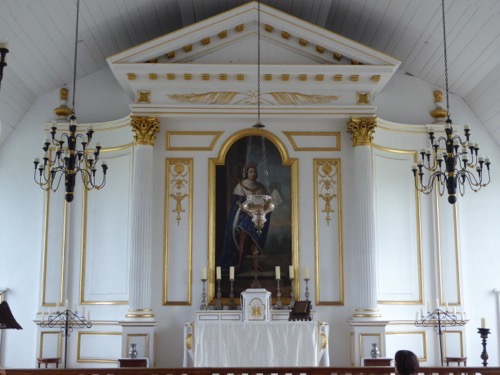



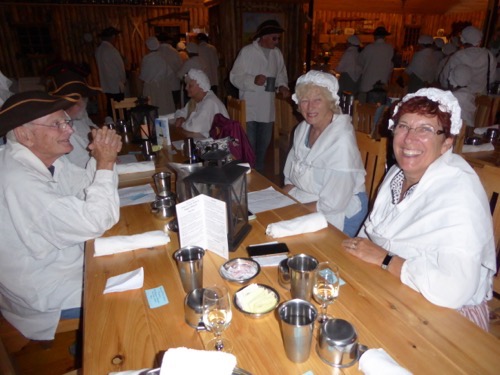
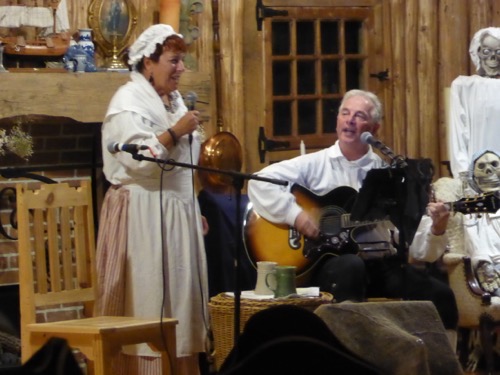
 We caught up with the rest of the caravan on Saturday in Grand Codroy just in time to enjoy a pot luck dinner and games. We did have a short time to explore the area and had a nice drive around the bay and out to the Cape Anguille Lightstation, the most western lighthouse in Newfoundland. We almost stopped at a tiny little truck for a local hamburger but I talked John out of it.
We caught up with the rest of the caravan on Saturday in Grand Codroy just in time to enjoy a pot luck dinner and games. We did have a short time to explore the area and had a nice drive around the bay and out to the Cape Anguille Lightstation, the most western lighthouse in Newfoundland. We almost stopped at a tiny little truck for a local hamburger but I talked John out of it.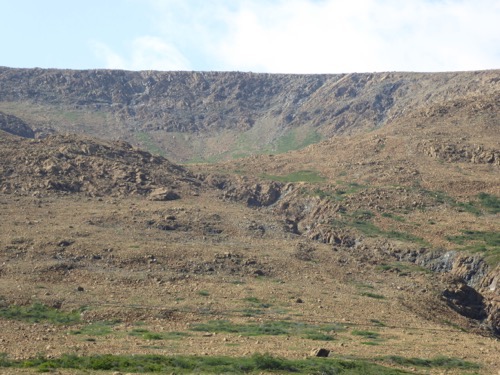





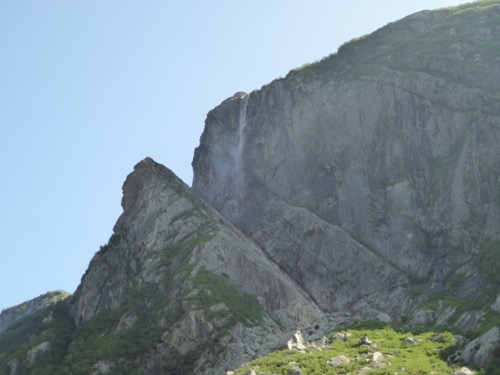



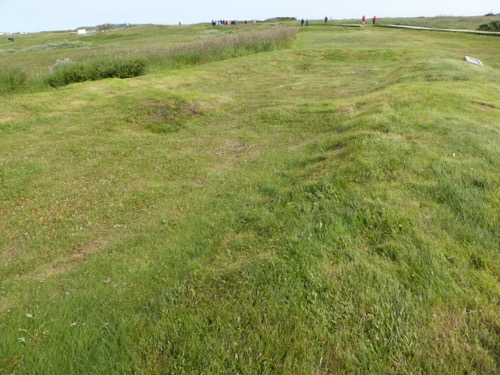




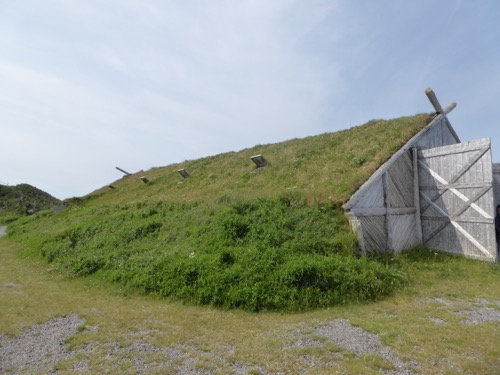

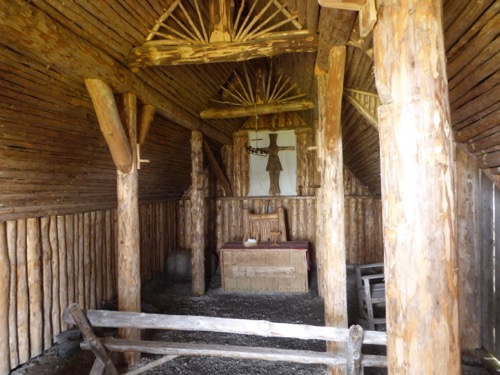

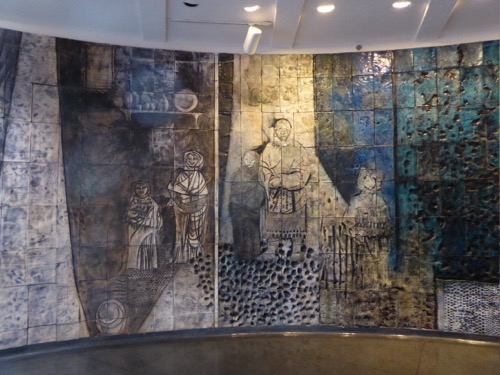
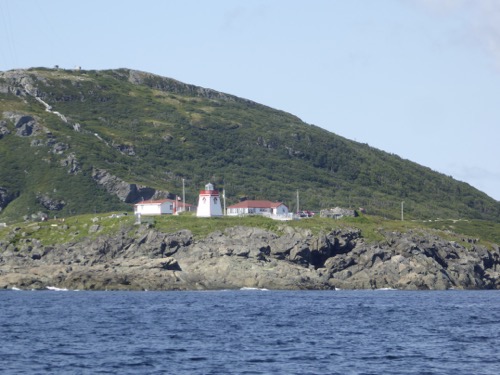 Most signs state “Whale Watching Tour” but our naturalist insisted it is more of a “whale hunting tour” as they cannot determine exactly where the whales are running although they have a pretty good idea as they have spotters on the points and in the ocean as well as all the passengers on the boat.
Most signs state “Whale Watching Tour” but our naturalist insisted it is more of a “whale hunting tour” as they cannot determine exactly where the whales are running although they have a pretty good idea as they have spotters on the points and in the ocean as well as all the passengers on the boat. 



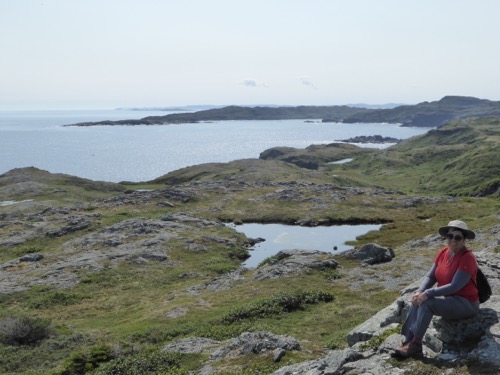

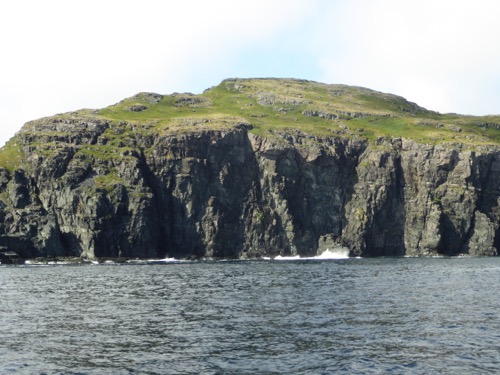 We spent the afternoon driving around the town, shopping in gift shops and a hardware store/housewares store, and exploring the docks and neighborhoods. Its a pretty town which we’ll learn more about in another day or two.
We spent the afternoon driving around the town, shopping in gift shops and a hardware store/housewares store, and exploring the docks and neighborhoods. Its a pretty town which we’ll learn more about in another day or two. Our campground is a short 5 minute walk from the ferry dock but at 7 am it seemed longer and it was definitely cold this morning (49°)! We boarded the ferry, found some comfortable seats, got a cup of coffee and enjoyed a smooth 90 minute sail across the Strait of Belle Isle to Blanc Sablon, Quebec. Just a half kilometer later the bus had us in Labrador and on our way to Red Bay, another 90 minute ride.
Our campground is a short 5 minute walk from the ferry dock but at 7 am it seemed longer and it was definitely cold this morning (49°)! We boarded the ferry, found some comfortable seats, got a cup of coffee and enjoyed a smooth 90 minute sail across the Strait of Belle Isle to Blanc Sablon, Quebec. Just a half kilometer later the bus had us in Labrador and on our way to Red Bay, another 90 minute ride.



